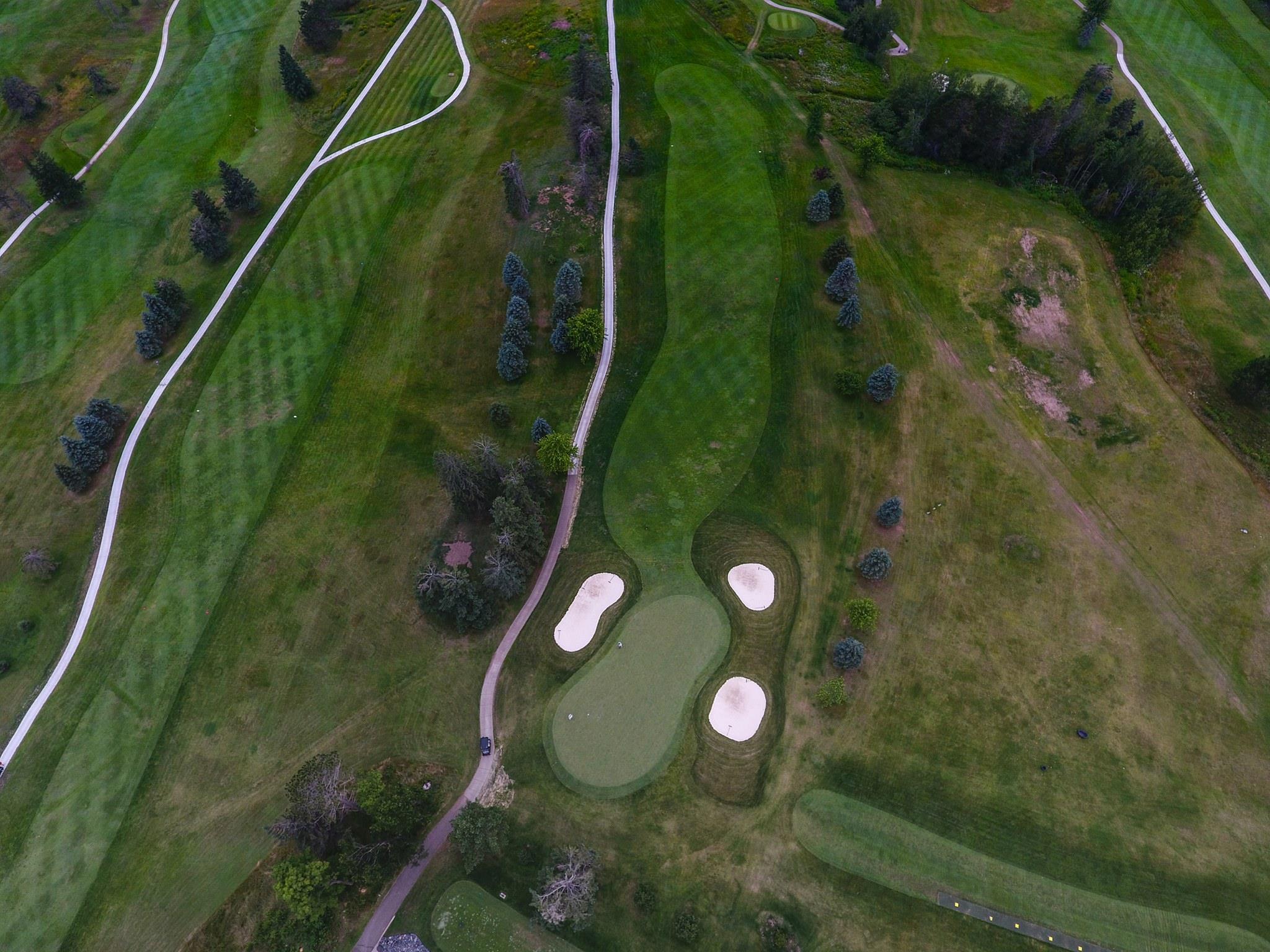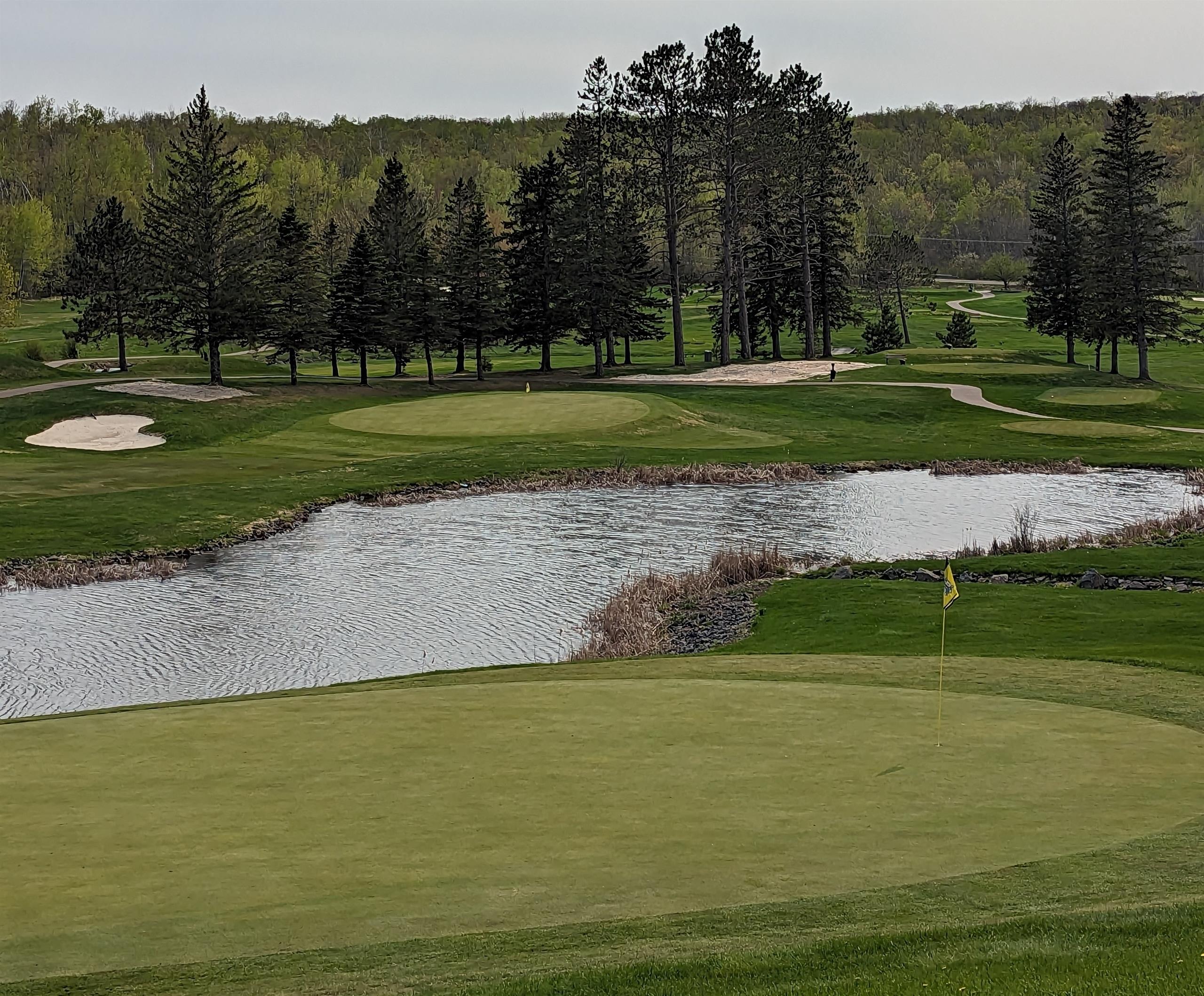
The Ridgeview golf course is a par 70 (34 -36) layout featuring numerous elevation changes, sloping fairways, and not-so-subtly contoured greens. A few ponds populate the course as well as a meandering creek that captures its share of wayward balls. The perimeter holes are marked by woods and out of bounds. In recent years, storms and landscape management have removed many of the trees that once lined the interior fairways of the course. Ridgeview is not a long test with the men’s blue tee currently set at just 6,264 yards. However, sand traps protect most greens which tend to be on the smaller size as is characteristic of older era courses. While the course these days is set up to be more playable for the typical golfer, there are still traces as to why Ridgeview was considered one of the more difficult courses in the upper Midwest.
Several major changes were made to the course in the early 1950s. The first green was relocated adding approximately 35 years to the hole. An observant eye can see the contours of the original green in the first fairway looking back from the second tee. The 12th green was also relocated from its original location in a flat area that now fronts the current 13th fairway. It was moved about 100 feet east to its present spot to create space for a redesigned 13th hole. The 13th hole was formerly a 90-degree left dogleg. Shooting north out of the tee surrounded by woods on three sides, the player’s drive crossed Tisher Creek into a hilly area (now covered by trees) adjacent to the 12th tee. The hole then turned west, the right rough bordering a utility road, and re-crossed the creek towards a green located in an area currently occupied by the 14th tee.
The Years 1980-1990 also saw substantial changes to Ridgeview. A driving rand now occupies what was once the 11th fairway. A new 11th hole was carved out of the adjoining woods creating a right dogleg to the original green. The 9th hole originally was a straight hole termination at a green located where the chipping range is today. The green was moved to its current location near the clubhouse creating a right dogleg hole. At the time a controversial move, the difficult par three 17th hole was made shorter and the green less elevated to the tee when a new putting surface was cut into the hillside below the former green. The second green was once again moved further west and away from bordering out-of-bounds. Traces of that green can still be seen in the rough area just west of the pond. Finally, the 13th green was moved south about 100 feet to its present location to create more dogleg to the hole.
